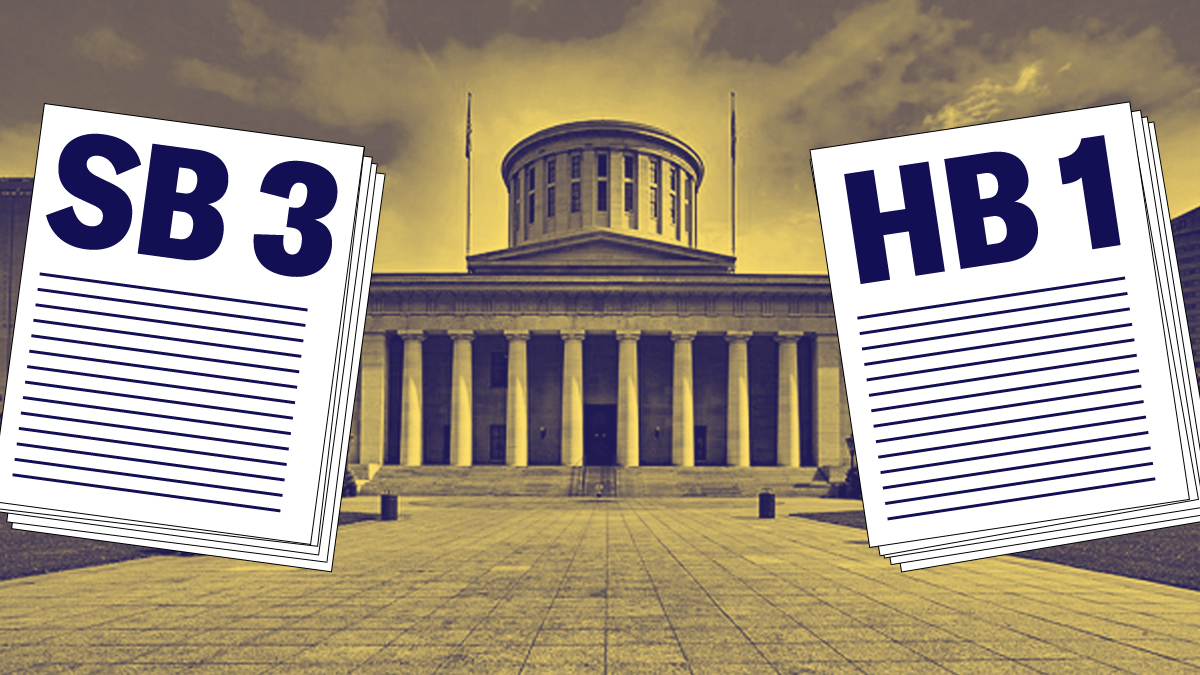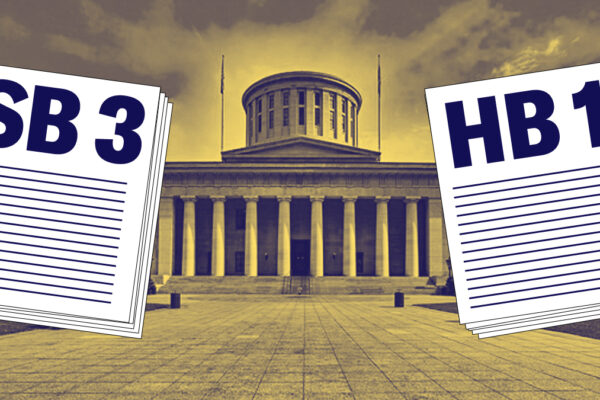
Right now,
Ohio spends over $1.8 billion every year to hold nearly 50,000 people in prison. Many of those prisoners struggle with addiction, and many are locked up for simple drug crimes.
Throwing people in prison has not solved our state’s drug problems – but it has hurt thousands of Ohio families. It’s (way past) time to focus on treatment, recovery, and programs that keep people out of prison once they’re released.
There are two bills moving through the Ohio Statehouse right now
that would lower Ohio’s prison population: Senate Bill 3 (SB 3) and House Bill 1 (HB 1).
Some people think the bills are at odds with each other,
and that only one will make it to the finish line; b
ut here’s the truth: SB 3 and HB 1 are completely different bills – there isn’t much overlap. Legislators can and should pass both.
See our one-pager for a quick analysis on each bill.
SB 3 AT A GLANCE:
Sponsors: John Eklund (R), Sean O’Brien (D)
Committee: Senate Judiciary Committee
Where is it now? As of 6/17/19, SB 3 has had six hearings in Senate Judiciary Committee.
The ACLU of Ohio supports SB3.
SB 3 is a drug sentencing reform bill. Its goal is to punish people selling drugs and help people struggling with drug use. In short, SB 3:
- Reclassifies some low-level, nonviolent drug possession crimes from felonies to misdemeanors
- Ensure that people struggling with addiction receive treatment rather than jail time
- Does a better job distinguishing between "drug possession" and "drug trafficking" than current law
- A person found with small amounts of a controlled substance would be punished differently than someone with large amounts of the same substance (intent to sell)
- Increases penalties for drug trafficking and intent to sell
- It is now retroactive, but the bare minimum (only those with cases pending but no conviction at the time of SB 3 enactment)
Additionally, SB 3 Would:
- Increase the amount of drugs someone must possess before they can be charged with "Aggravated trafficking"
- Increase the amount of marijuana or hashish needed before receiving severe penalties
- Help keep people out of prison for "technical" probation violations
- Clarify the process for asking a court to send a person to involuntary drug/alcohol treatment
- Keep the existing "seeking medical assistance" exemption for all drug possession charges
- Allow city and county prosecutors to decide in which court (municipal or common pleas) a case will proceed
- Break drug charges into 5 categories: aggravated drug trafficking, major drug trafficking, trafficking, possession of a controlled substance, possession of marijuana or hashish
- It also creates a new category: sexual assault-enabling drugs
- Note: Drugs intended/used for sexual crimes AND/OR drugs trafficked near schools would still receive harsh penalties
HB 1 AT A GLANCE:
Sponsors: Phil Plummer (R), Paula Hicks-Hudson (D)
Committee: House Criminal Justice Committee
Where is it now? HB1 passed the House, 90-6, on 6/19/19. It now moves to the Ohio Senate (no committee assignment yet)
The ACLU of Ohio supports HB1.
HB 1 expands the use of drug treatment rather than conviction for people struggling with drug or alcohol addiction, works to seal old records of nonviolent crimes, and increase other non-incarceration support. Its goal is to get people struggling with addiction the help they need, and allow them to rebuild their lives.
In short, HB1 would:
- Require the court to hold a hearing to consider whether the person should receive treatment (and/or assistance) instead of a conviction
- Require courts to find and write down a specific reason why drug/alcohol treatment would not help the person
- This increases the likelihood that courts will choose treatment over conviction in each individual case
*Offenders charged with felony sex crimes would not be eligible for "Intervention in Lieu of Conviction*
SB3 AND HB1 BOTH PRIORITIZE:
Sealing records: The main overlap between SB3 and HB 1 involves sealing records for people who are no longer in the court/prison system. If we allow people to have their records sealed, they will have a much better chance at getting good jobs, rebuilding their lives, and ending the cycle of incarceration.
- SB3 allows more people (than current law) to have their records sealed for nonviolent offenses. It also lets some people apply to seal their records earlier than current law, and allows some people to apply to seal their records after completing a drug treatment program.
- HB1 allows many people to have their records sealed earlier than under current law. It also lets people apply to have misdemeanors or 4th/5th degree felony records sealed, no matter how many convictions they have.
Treatment over jail time: Both bills encourage treatment rather than jail time for low-level drug possession charges. HB1 requires a hearing to determine if treatment is a good fit when a person claims drugs and/or alcohol were involved in their case. Also, SB 3 assumes treatment over jail time for low-level drug possession charges.
BOTTOM LINE:
There is not enough overlap between these bills to only pass one of them. With a relatively small number of changes, these two bills would address very different, but equally important, pieces of the sentencing reform puzzle.
Together, these two bills can help lower Ohio’s prison population, save the state millions of dollars, and help more Ohioans rebuild their lives after going through the court system. Tell your Ohio legislators to pass both.

